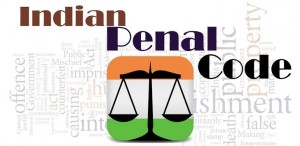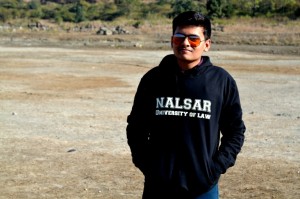In this blog post, Abhiraj Thakur, a student at NALSAR University of Law, Hyderabad, critically analyses the different judicial interpretations of Section 295A of the Indian Penal Code.
‘He who has denied the providence of Almighty Christ must be punished’[1]
Since antiquity, religion as acted as one of the most powerful binding force of masses and naturally the people who have dared to open their mouths against it have faced serious consequences. Colloquially blasphemy is regarded as contempt of god or hurting religious feelings of a person or group of persons. Many countries of the world have blasphemy laws to regulate the practice as it creates mass public disturbance and often religious violence.
 Section 295A occupies a distinct space in the Indian Penal Code and has long been regarded as India’s answer to blasphemy laws prevalent in other criminal statutes. It has been recurrently used in recent times and has generated a wide-ranging spectrum of reactions from the public and the civil society, though such laws should seemingly assume a lesser role in a nation that aims to separate State and religion.
Section 295A occupies a distinct space in the Indian Penal Code and has long been regarded as India’s answer to blasphemy laws prevalent in other criminal statutes. It has been recurrently used in recent times and has generated a wide-ranging spectrum of reactions from the public and the civil society, though such laws should seemingly assume a lesser role in a nation that aims to separate State and religion.
Despite a number of difficulties associated with interpreting Section 295A, the law could be much clearer than it currently is. In order to attract the mischief of the provision of Section 295A, the following ingredients are to be satisfied, viz. a person,
- by written words,
- with deliberate and malicious intention,
- of outraging the religious feelings,
- of any class of citizens of India,
- Insults or attempts to insult the religion or the religious beliefs of that class.
In other words, (1) the intention has to be deliberate and malicious both and (2) for outraging the religious feelings (3) of a class of citizens of India (4) in order to insult or attempt to insult the religion or religious belief of that class i.e. in India (5) by written words.[2]
Judiciary and Blasphemy
 Prior to Section 295A, a similar section was already present in colonial India’s law books. The government used to rely solely upon the Section 153A of the IPC. The earliest incident that made judiciary ponder over blasphemy law provisions in the IPC happened during a period of unrest in Punjab in the 1920’s.
Prior to Section 295A, a similar section was already present in colonial India’s law books. The government used to rely solely upon the Section 153A of the IPC. The earliest incident that made judiciary ponder over blasphemy law provisions in the IPC happened during a period of unrest in Punjab in the 1920’s.
A person named Rajpal published an anonymous pamphlet called ‘Rangeela Rasool’ (Colourful prophet). The pamphlet made derogatory and scurrilous remarks about the personal life of Prophet Muhammad and soon led to widespread unrest amongst Indian Muslims after gaining sufficient attention.[3] Since then judiciary has dealt at length with Section 295A, the much controversial issues surrounding freedom of speech and expression and blasphemy laws can be understood in light of the interpretation of the section by various courts in the country.
When to Punish?
 Keeping the worthy intentions of the Assembly in mind, the problems with the statute become all the more apparent. A particularly liberal stream of thought holds that the presence of sections such as 295A in the Indian Penal Code only mirrors the anxiety of the Indian Government to maintain accord and harmony in a multi-religious and multicultural country. However, the lines between maintaining security and creating a draconic law with incommensurate criminal punishment are quite thin.
Keeping the worthy intentions of the Assembly in mind, the problems with the statute become all the more apparent. A particularly liberal stream of thought holds that the presence of sections such as 295A in the Indian Penal Code only mirrors the anxiety of the Indian Government to maintain accord and harmony in a multi-religious and multicultural country. However, the lines between maintaining security and creating a draconic law with incommensurate criminal punishment are quite thin.
The constitutionality of Section 295A was questioned in the case of Ramji Lal Mody, where a five-member bench ultimately upheld the provision.[4]
The justification for that decision was that the statute only punishes aggravated forms of insult to religion perpetrated with deliberate and malicious intention. However, the words ‘deliberate and malicious’ were inserted to ensure that the section would be ‘both comprehensive and at the same time of not too wide an application’.[5] This ambiguity of application is a result of judicial interpretation of the section and it has been unfortunate that it has led to a great number of instances where artists and writers have been prosecuted in the name of blasphemy.
Faults in Standard for Applying Exceptions
Exception 1
The principle that legitimate scholarly research and most cases of genuine artistic expression are exempt from this provision has long been held by many as the Sine qua non that allows 295A to be compatible with the importance of freedom of expression in a democracy.[6] Somewhat bizarrely, the Supreme Court has applied such tests in cases that don’t actually warrant it. In Sri Baragur Ramachandrappa v State of Karnataka,[7] a case that involved the ban of a Kannada novel that fictionalised the life of the 12th century Saint Basaveshwara. The author had suggested that Saint Basaveshwara’s nephew was born out of wedlock.
The followers of Basaveshwara ultimately moved the State to ban the book, which duly obliged. Later, the Supreme Court upheld the decision after carefully going over substantial research done by Kannada scholars and local beliefs. It concluded that the author had deliberately tried to spin and introduce a particularly ‘sordid and puerile story’.[8] What the Court had done in effect was to imply that even a writer of fiction had to somehow straddle precepts of scholarly research when writing a humanistic work, a piece of reasoning that is unconvincing and illogical and one that the Court would do well to move away from in the future.[9]
Exception 2
Consequently, the Courts have delved into creating another system of check for 295A, which has been closely borrowed from 153A, one that negates the ‘truth’ test as mentioned above. In State of Maharashtra v Sangharaj Damodar Rupawate,[10] a case about the controversy which surrounded James Laine’s book, Shivaji: A Hindu King in Islamic India.
The incident led to widespread protests in Maharashtra. The Supreme Court used the occurrences as grounds for declaring that the book was responsible for creating feelings of enmity between classes. More interestingly, however, they also held that if any piece of work led to such incidents, even the fact that it contains historical truth is not an acceptable defence.[11]
Causal Connection and Punishment
In Ramji Lal Modi, it was contended that to ensure that the law is a reasonable restriction upon free speech, there should be a proximate connection between the impugned speech and the possibility of public disorder that may or may not arise from it. It is a commonly accepted precept in criminal law to identify the conditions under which the result may be attributed to the accused.[12] The Supreme Court, however, rejected this proposition. 3 years later, however, the Supreme Court in Superintendent, Central Prison, Fatehgarh v Ram Manohar Lohia, held that for a case to stand under 295A, there must be a proximate relation between the proscribed speech and public disorder, and not a ‘far-fetched, remote or fanciful connection’.[13]
Later, the development of further legal precedent in this regard has led to the creation of a very high threshold for the state to fulfil.
[divider][1] Blackstone’s Commentary on Common Law
[2] Sujato Bhadra v State of West Bengal, (2005 CriLJ 368), Para 5.1
[3] Neeti Nair, Beyond the “communal” 1920s: the problem of intention, legislative pragmatism, and the making of Section 295A of the Indian Penal Code’, The Indian Economic and Social History Review, Vol. 50, No. 3, September 2013, 317-340
[4] Ramji Lal Modi v State of UP, (1957) 1 SCR 860
[5] Select Committee Report, The Gazette of India, 17 September 1927, p. 252
[6] Nair (2013 : 331)
[7] (2007) SCC 11
[8] Baragur Chandrappa v State of Karnataka, (2007) 5 SCC 11 Para 22
[9] Bhatia (2016: 143)
[10] State of Maharashtra v Sangharaj Damodar Rupawate, (2010) 7 SCC 398
[11] Rupawate, Para 25
[12] Ratanlal and Dhirajlal’s Indian Penal Code, 28th ed., Justice Y.V Chandrachud and V.R Manohar ed. (New Delhi: Wadhwa and Company Law Publishers, 1997
[13] (1960) 2 S.C.R. 821













I found a lot of information after reading your article. Thanks to the moderator of this site for writing such a beautiful article.